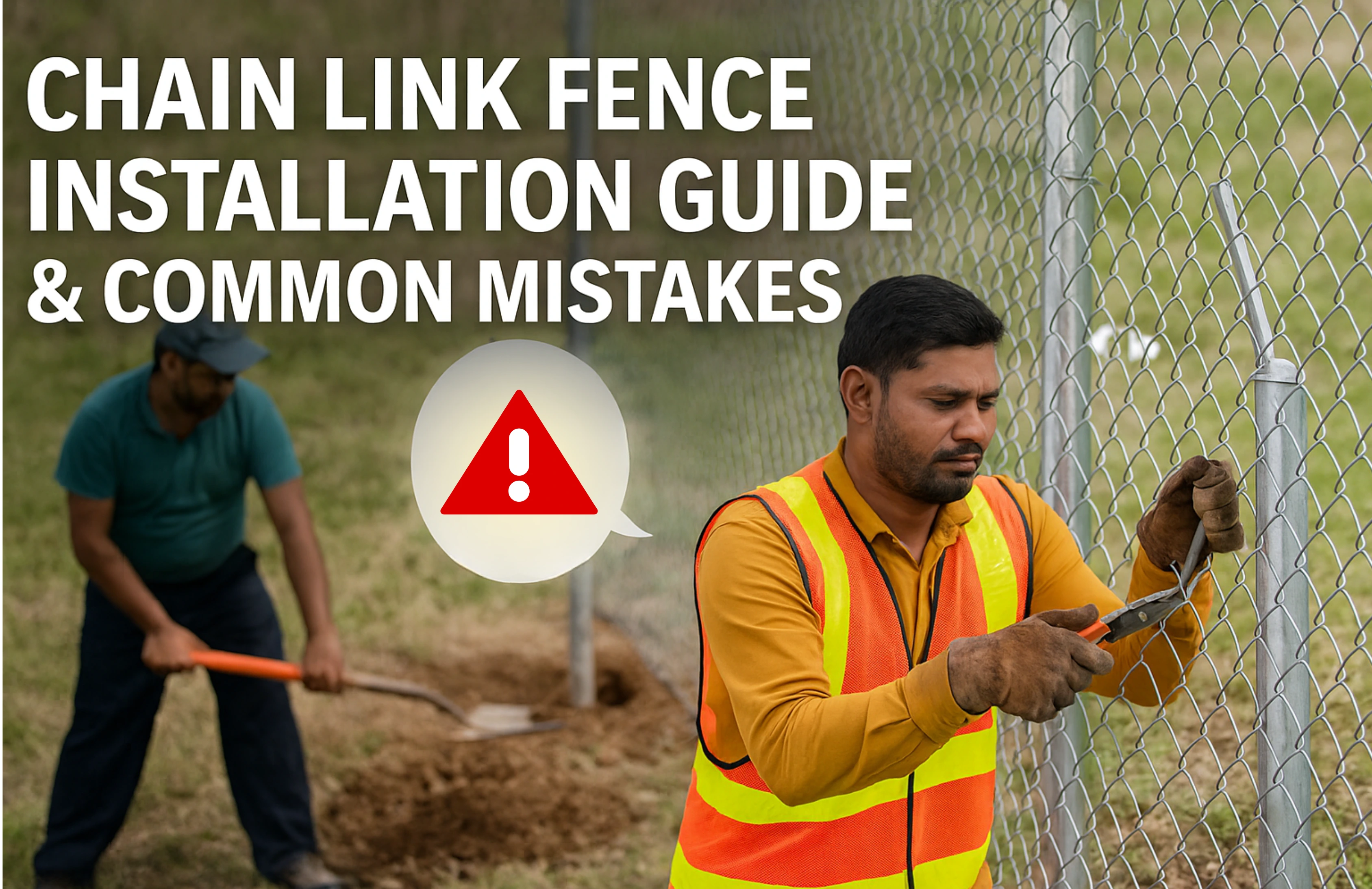 25 Apr 2025
25 Apr 2025
Installing a chain link fence is a reasonable way of safeguarding a section of property-hearth, farm, or business establishment. It is primarily used for security, agricultural purposes, or just simple protection of property. This guide will give easy instruction in setting up and avoiding common mistakes in fencing.
1. Check with local authorities about regulations and permits.
2. Know exactly where your property lines exist.
3. Call the utility companies before digging to avoid hitting any pipes or cables.
4. Determine what the intended purpose is: Is it for security, animals, or boundary marking.
Required Tools :
1. Post hole digger
2. Tape measure
3. Level
4. Hammer or wrench
5. Fence puller
6. Pliers
Materials Required
1. Chain link fence cloth
2. Fence posts: corner, gate, and line posts
3. Top rail
4. Tension bars and bands
5. Tie wires
6. Concrete mix
1. Use string and stakes to mark the lay of the fence.
2. Mark every 6 to 10 feet for line posts.
3. Leave room for gates as necessary.
4. Dig every hole about 2 feet deep and 8 inches wide.
1. Put the posts down the holes.
2. Fill the holes with concrete.
3. Slant the top of the concrete away from the post for draining water.
4. Let the concrete set for a minimum of 24 hours.
Section 5: Fix the Fence Install Hardware
1. Put tension bands on the terminating and corner posts.
2. Connect the upper rails using caps.
3. Attach hinges as well as latches in case a gate is installed.
1. Lay the length of chain-link fence along the line.
2. Thread a tension bar into one end of the mesh and attach it onto the post.
3. Use a fence puller to stretch the mesh tight.
4. Wire tie the mesh to the line posts.
5. Finish with the opposite end joined by another tension bar.
1. Skipping Planning
Not checking local codes or boundaries can lead to fines or having to remove your fence.
2. Shallow Post Holes
Post that aren't deep enough will get an inevitable wobble, or even worse, will not be standing after a while.
3. Loose Fence Fabric
The fence would not look or last long if the mesh were not tensioned very tightly.
4. Variable Post Heights
Posts that are not level will cause an undulating top rail and render the structure weaker.
5. Rushing the Concrete Cure Time
This ensures that the posts are placed firmly in the supplied reinforced concrete to maintain the strength of the fence.